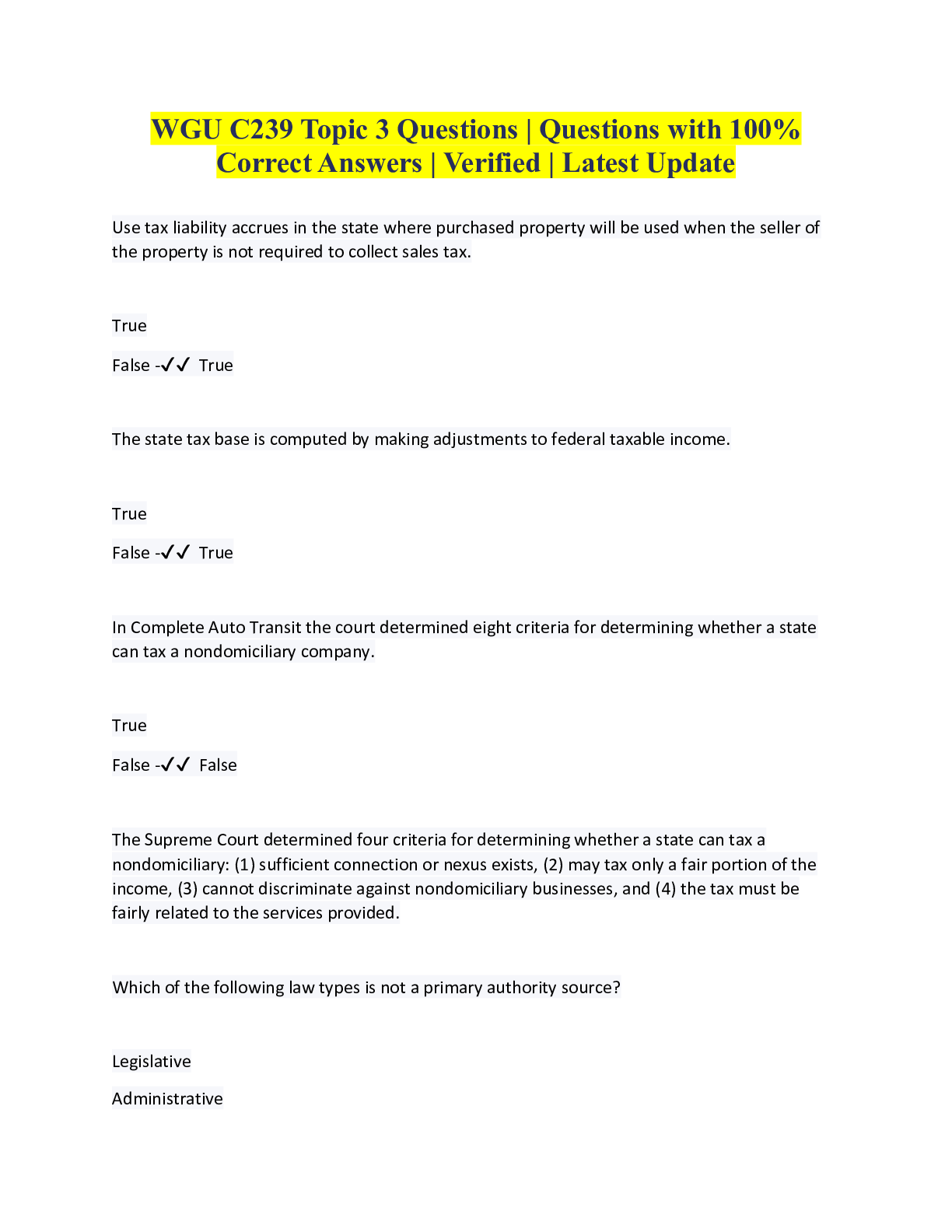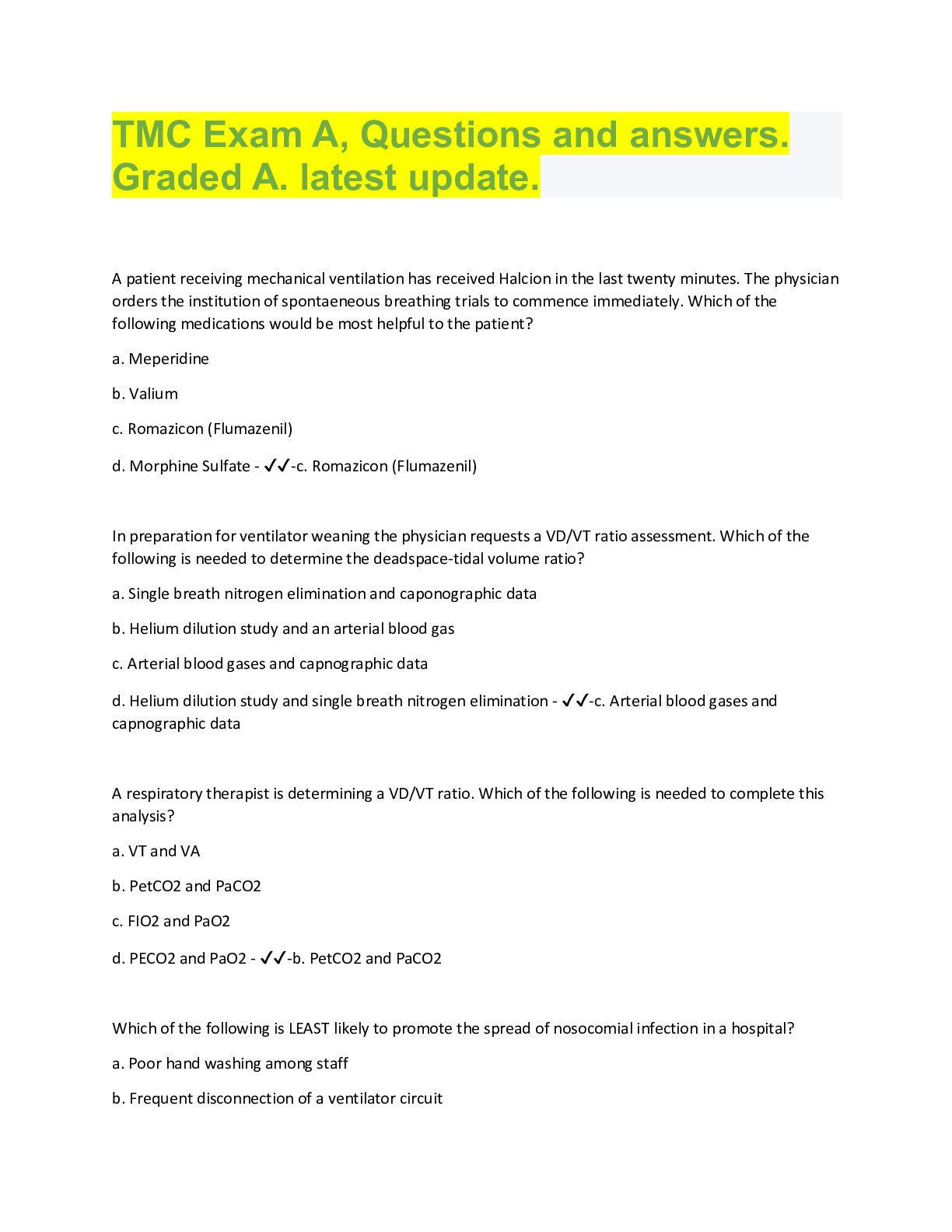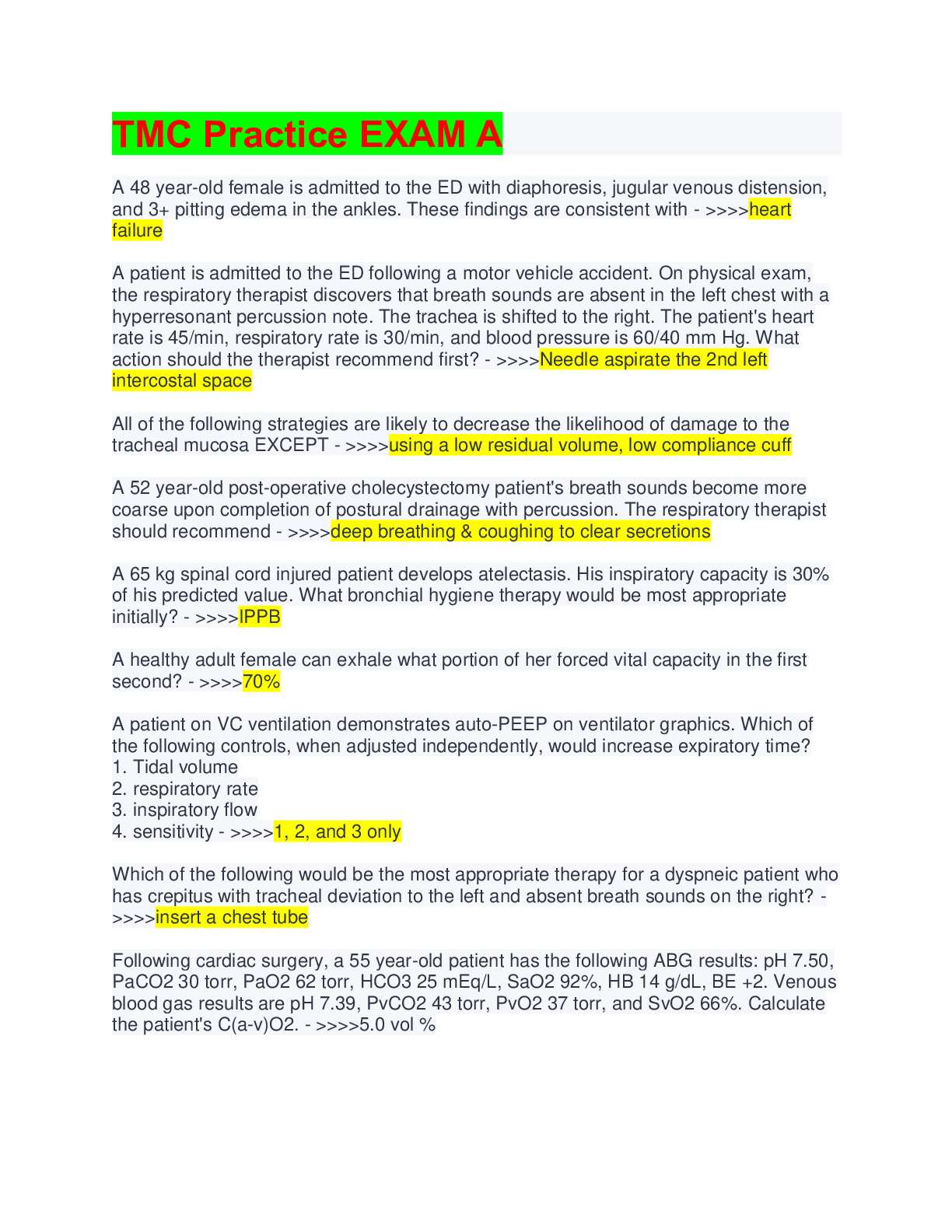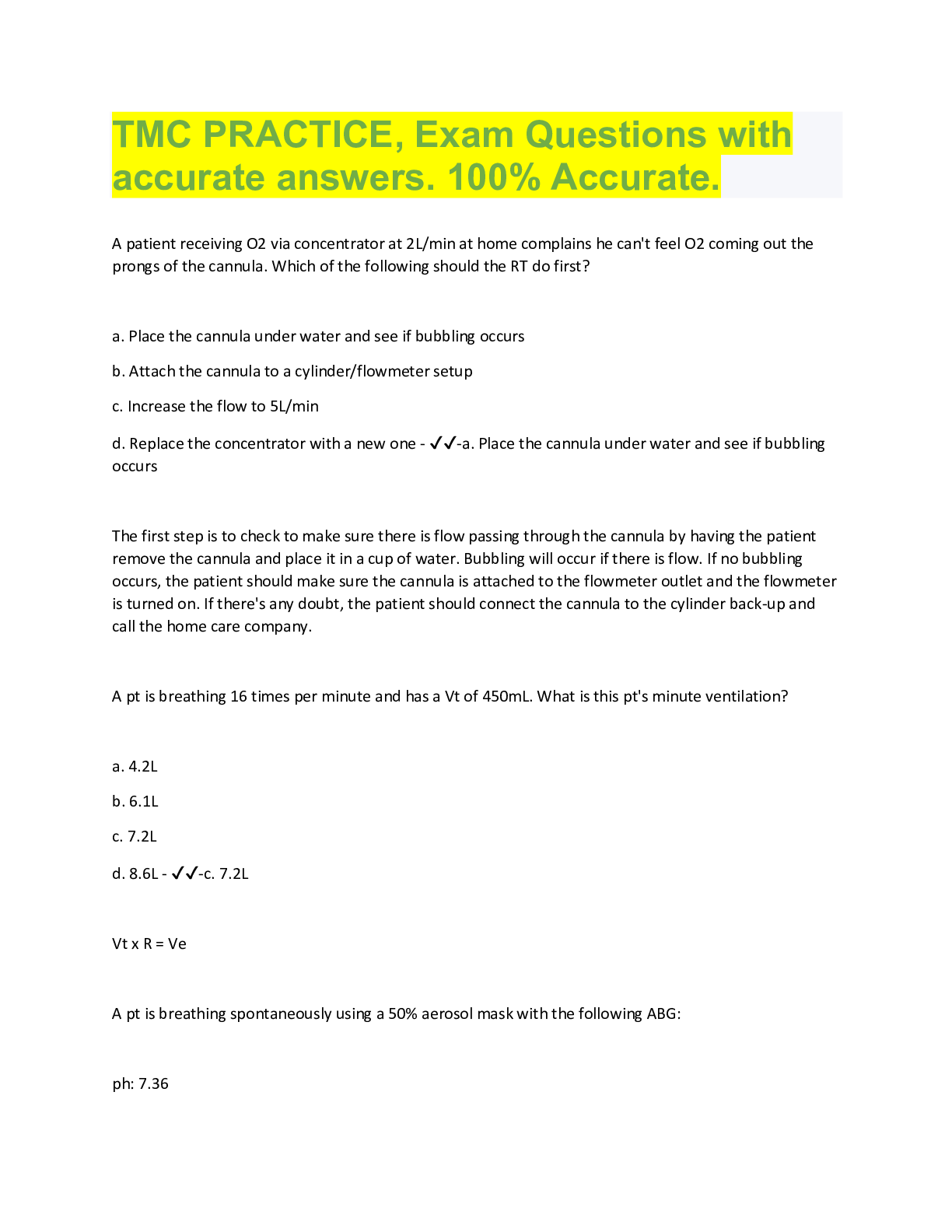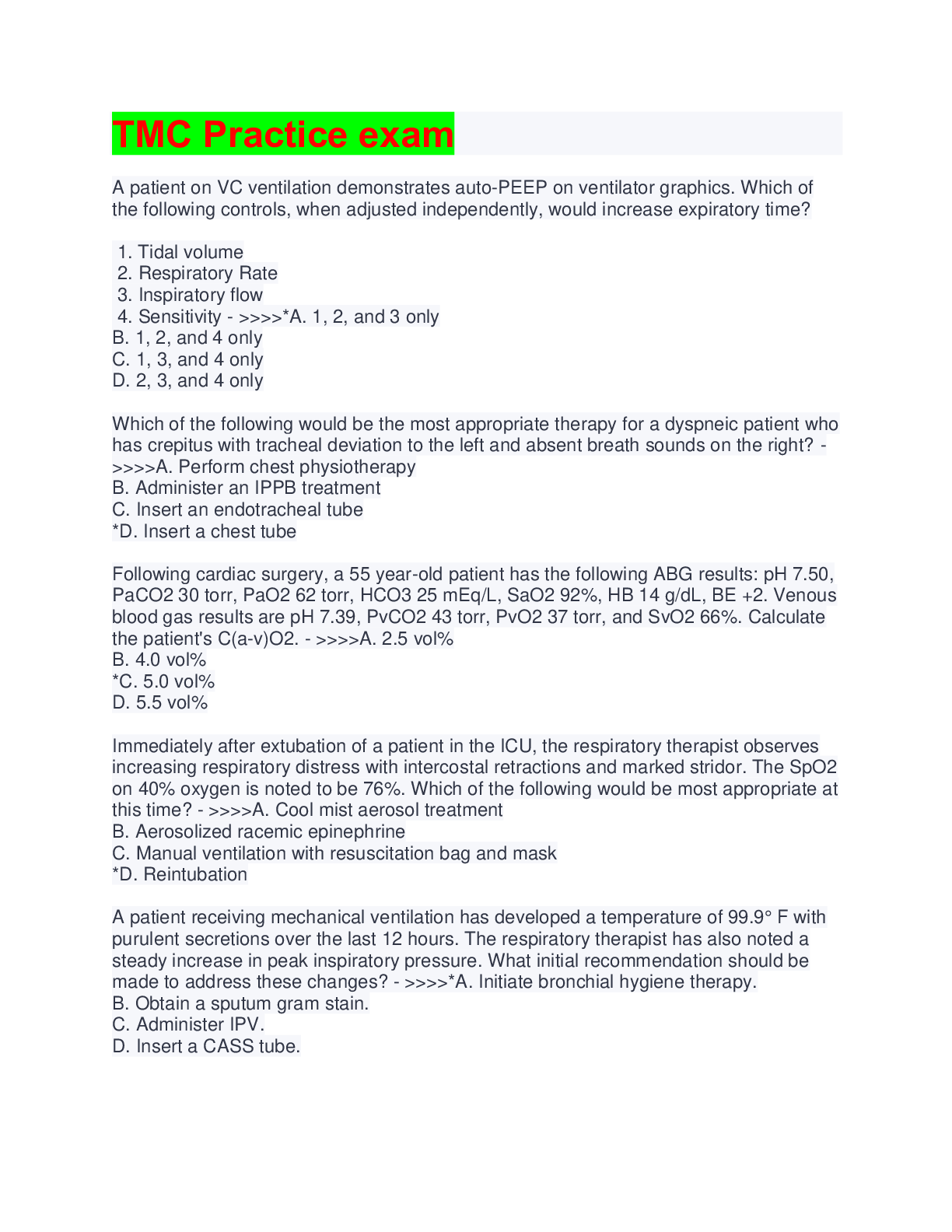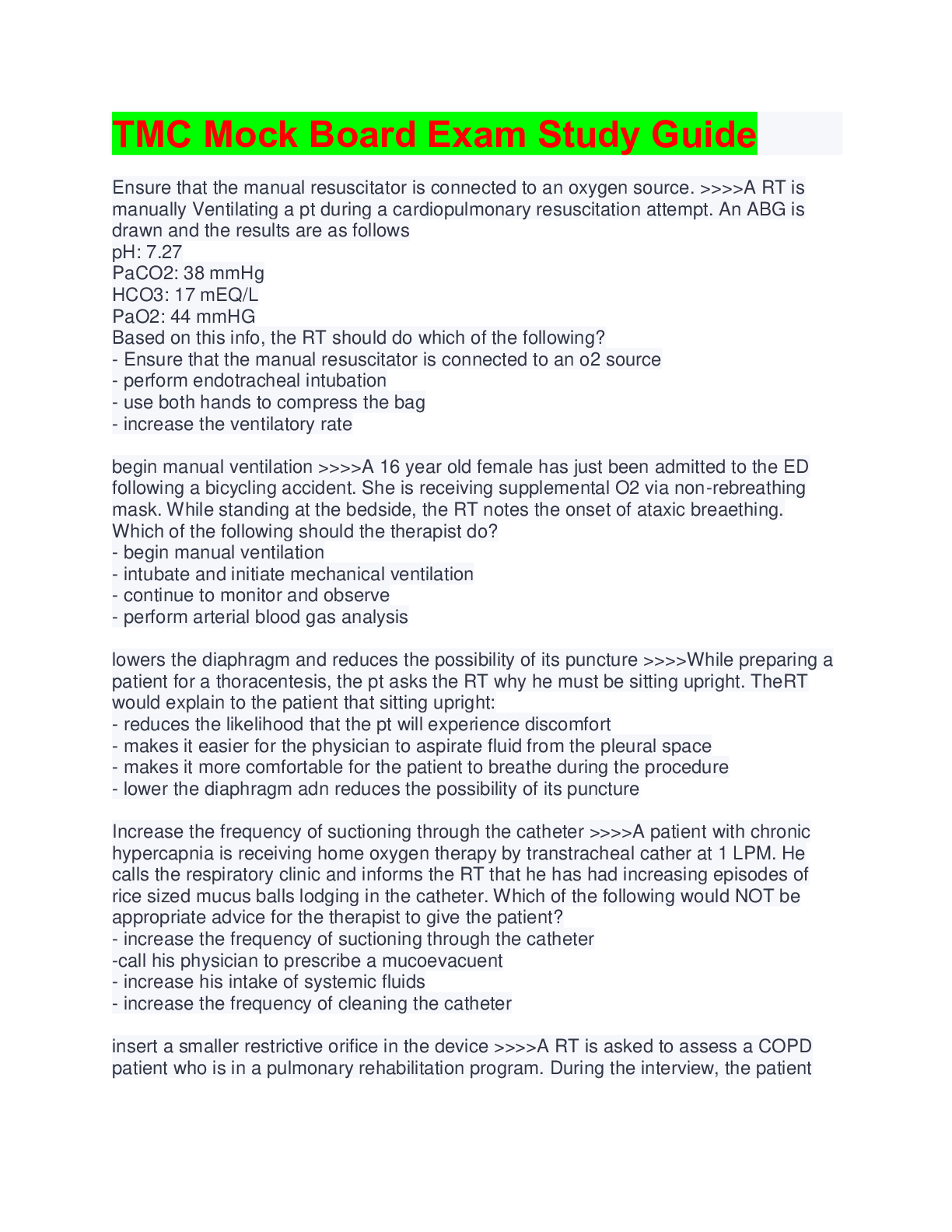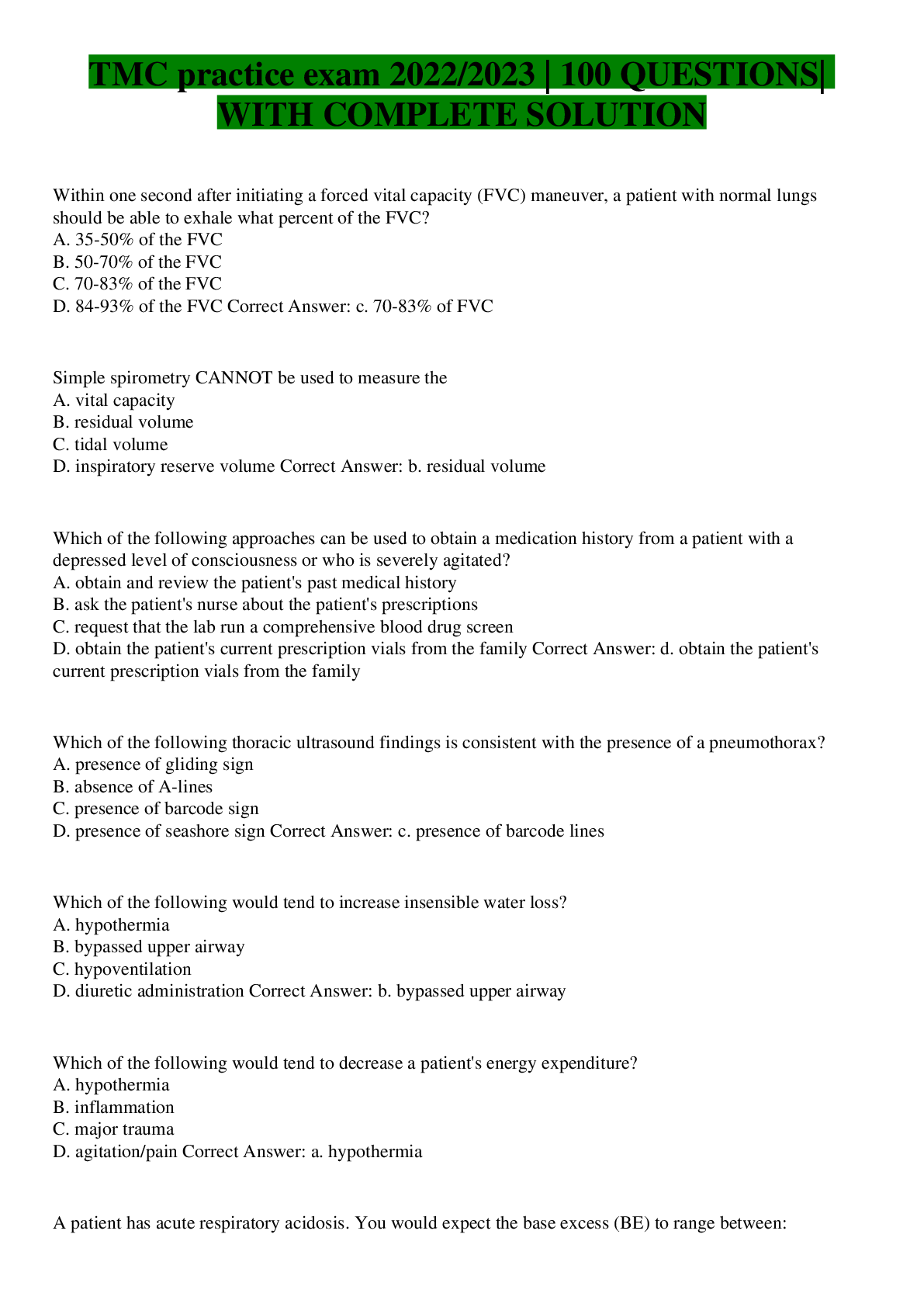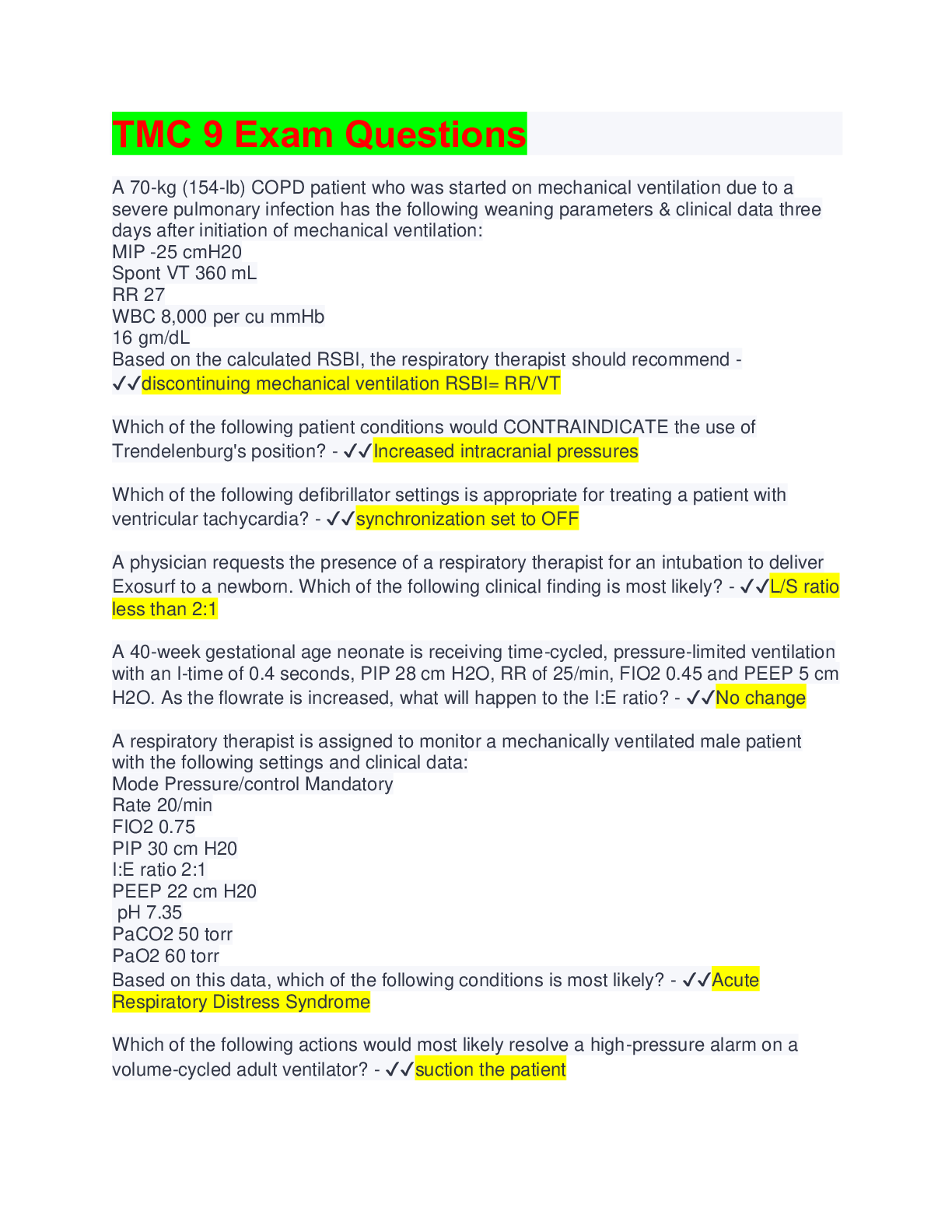*NURSING > QUESTIONS & ANSWERS > C&S TMC Exam 1. All Questions with 100% Accurate ANSWERS. Rated A+ (All)
C&S TMC Exam 1. All Questions with 100% Accurate ANSWERS. Rated A+
Document Content and Description Below
- An infant is being mechanically ventilated via a time-cycled, pressure-limited ventilator. Which of the following would occur if PEEP were increased without a corresponding increase in peak pressure... ? - ☑☑The tidal volume would decrease - A physician requests the respiratory therapist to assess the upper airway function of a patient with a fenestrated tracheostomy tube. The therapist should: - ☑☑Remove the inner cannula, deflate the cuff, plug the outer cannula - A patient receiving sustained maximal inspiratory (SMI) treatments with a volume-oriented incentive spirometer device begins to inhale through the device 18 times per minute. Which of the following best explains this situation? - ☑☑The patient needs re-instruction regarding the SMI therapy - After initiating mechanical ventilation in the A/C mode for an adult male patient, the respiratory therapist observes that the patient is agitated and having difficulty in cycling the ventilator. Which of the following should the therapist do? - ☑☑Increase the sensitivity setting - Data recorded for a 52 kg (110 lb) mechanically ventilated patient who has a long standing history of chronic hypercapnia are as follows: Ventilator Settings Arterial Blood Gases Mode: SIMV pH: 7.36 VT: 400 mL PaCO2: 62 mmHg Rate: 8/min HCO3: 34 mEq/L FiO2: 0.35 PaO2: 61 mmHg On the basis of this information, the respiratory therapist should: - ☑☑Maintain current settings - A respiratory therapist is manually ventilating a patient during a cardiopulmonary resuscitation attempt. An arterial blood gas is drawn and the results are as follows: pH: 7.27 PaCO2: 38 mmHg HCO3: 17 mEq/L PaO2: 44 mmHg Based on this information, the respiratory therapist should do which of the following? - ☑☑Ensure that the manual resuscitator is connected to an oxygen source - A COPD patient is brought to the ED after several days of increasing respiratory distress. Baseline blood gases are drawn and the patient is placed on oxygen at 2 LPM via nasal cannula. Data from the original and a subsequent arterial blood sample are as follows: Room Air Sample pH: 7.23 PaCO2: 82 mmHg HCO3: 33 mEq/L PaO2: 49 mmHg 2L nasal O2 pH: 7.33 PaCO2: 66 mmHg HCO3: 34 mEq/L PaO2: 54 mmHg Based on the above information, the respiratory therapist should: - ☑☑Increase the oxygen flow to 3L/min and continue to monitor. - A 16-year-old female has just been admitted to the ED following a bicycling accident. She is receiving supplemental oxygen via nonrebreathing mask. While standing at the bedside, the respiratory therapist notes the onset of ataxic breathing. Which of the following should the therapist do? - ☑☑Begin manual ventilation - A respiratory therapist is performing a chest examination on an adult male patient. The therapist notes the trachea is deviated to the right with flatness to percussion on the right. Which of the following best explains these findings? - ☑☑Right sided atelectasis - A patient in the intensive care unit is receiving supplemental oxygen via 40% air-entrainment mask. Current arterial blood gas results are as follows: pH: 7.43 PaCO2: 54 mmHg HCO3: 34 mEq/L PaO2: 88 mmHg Which of the following is the correct interpretation for these results? - ☑☑Compensated metabolic alkalosis - While a respiratory therapist is checking the oxygen setup of a patient on 2L/min nasal cannula, the patient complains of not being able to detect any oxygen flow from the cannula. Which of the following actions is appropriate at this time? - ☑☑Tighten all connections - One hour after the initiation of volume-controlled ventilation in the A/C mode for a 21-year-old, 178 cm ( 5 ft 10 in) tall adult male patient who sustained severe lung contusions following a motor vehicle accident, an arterial blood gas sample was obtained. Pertinent data are as follows: Ventilator Settings: FiO2: 0.60 Rate: 16/min VT: 500 mL PEEP: 5 cmH2O Arterial blood gases: pH: 7.46 PaCO2: 30 mmHg HCO3: 21 mEq/L PaO2: 111 mmHg The respiratory therapist should suggest which of the following? - ☑☑Decrease the mechanical rate - The data below were obtained from 4 separate patients who are intubated and being mechanically ventilated. Which of the following patients IS a candidate for weaning? VD/VT Qs/Qt MIP Patient A: 0.63 0.12 -60cmH2O Patient B: 0.25 0.17 -16cmH2O Patient C: 0.51 0.27 -30cmH2O Patient D: 0.32 0.11 -36cmH2O - ☑☑Patient D - Following a traumatic nasal intubation, the patient begins to bleed profusely from the nasopharynx. The respiratory therapist should: - ☑☑Keep the nasotracheal tube's cuff inflated and suction the pharynx as needed. - A patient's ECG rhythm consistently reverts to the rhythm shown above. The respiratory therapist should recommend: - ☑☑Cardioversion - While preparing a patient for a thoracentesis, the patient asks the respiratory therapist why he must be sitting upright. The respiratory therapist would explain to the patient that sitting upright: - ☑☑Lowers the diaphragm and reduced the possibility of its puncture. - During the administration of a fluid challenge on a 74-year-old patient with an indwelling pulmonary artery catheter, the pulmonary capillary wedge pressure abruptly rises from 7 mmHg to 14 mmHg. Which of the following would be an appropriate action at this time? - ☑☑Stop fluid administration - A respiratory therapist is interviewing a 19-year-old female patient about her asthma symptoms. The patient states she is able to work normally most of the time and uses her reliever inhaler 2 or 3 times a week. The therapist would instruct the patient to: - ☑☑Continue with her usual treatment - A patient with a history of mild COPD has orders for mask CPAP at 10cmH2O. Arterial blood gas results prior to the intubation of CPAP shows pH 7.39, PaCO2 44 mmHg, PaO2 48 mmHg with an FiO2 0.50. One hour after the initiation of CPAP with an FiO2 of 0.50, arterial blood gases are obtained and the results are pH 7.34, PaCO2 52 mmHg, PaO2 44 mmHg. The respiratory therapist should recommend: - ☑☑Intubation and mechanical ventilation - While re-positioning a mechanically ventilated patient with right lung consolidation from supine position to side-lying with his left side down, he becomes dusky and agitated. The respiratory therapist should: - ☑☑Move the patient back to supine position - A patient with a chronic hypercapnia is receiving home oxygen therapy by transtracheal catheter at 1 LPM. He calls the respiratory clinic and informs the respiratory therapist that he has had increasing episodes of rice-sized mucus balls lodging in his catheter. Which of the following would NOT be appropriate advice for the therapist to give the patient? - ☑☑Increase the frequency of suctioning through the catheter - A respiratory therapist is asked to assess a COPD patient who is in a pulmonary rehabilitation program. During the interview, the patient tells the therapist that he has been working with a resistive training device for two weeks and that he is able to tolerate the device for 15 minutes. What should the therapist do? - ☑☑Insert a smaller restrictive orifice into the device [Show More]
Last updated: 1 year ago
Preview 1 out of 31 pages

Also available in bundle (2)
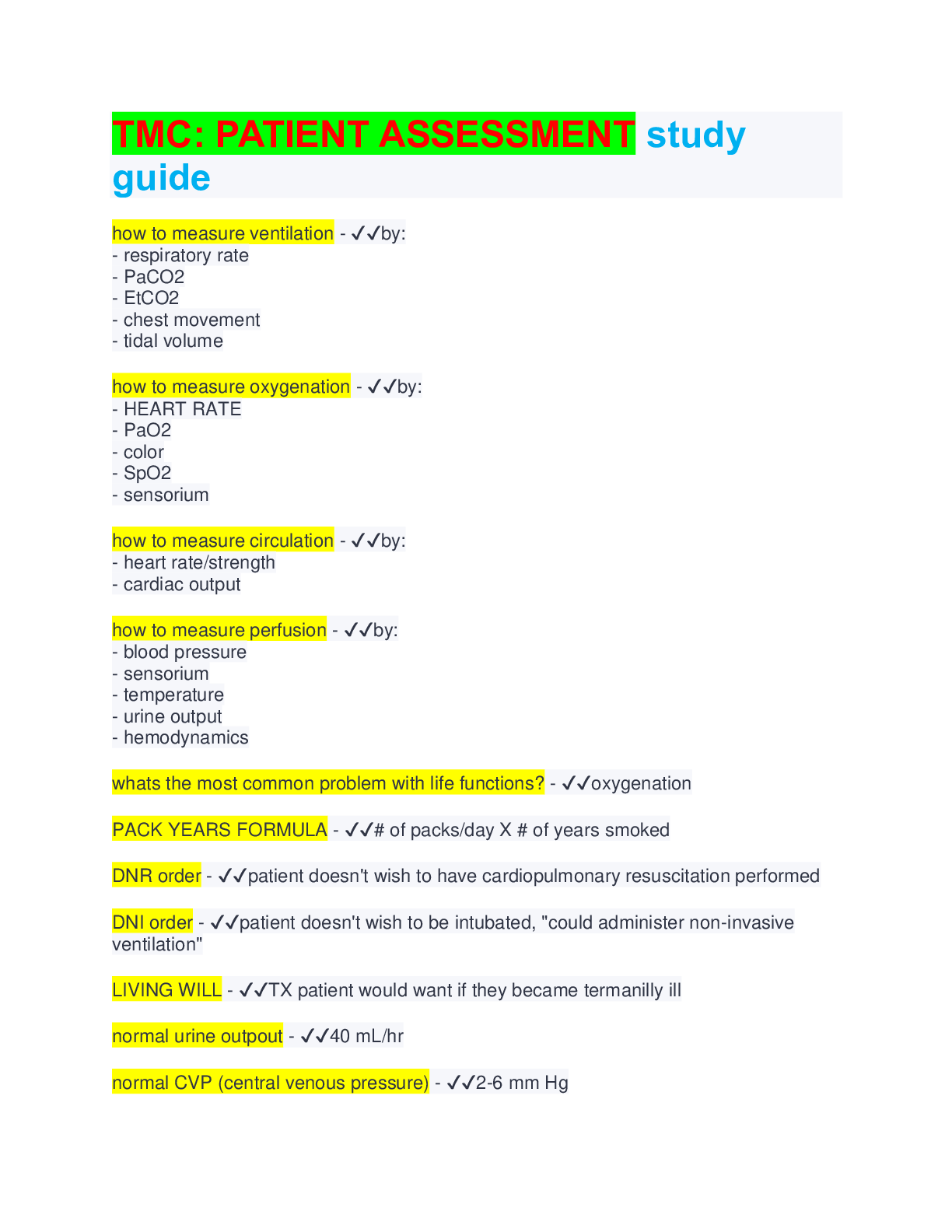
All TMC practice questions papers with answers. Bank questions. Download to score A
Most sought TMC revision kits. Guaranteed comprehension/ GRADE A+
By bundleHub Solution guider 1 year ago
$35
8
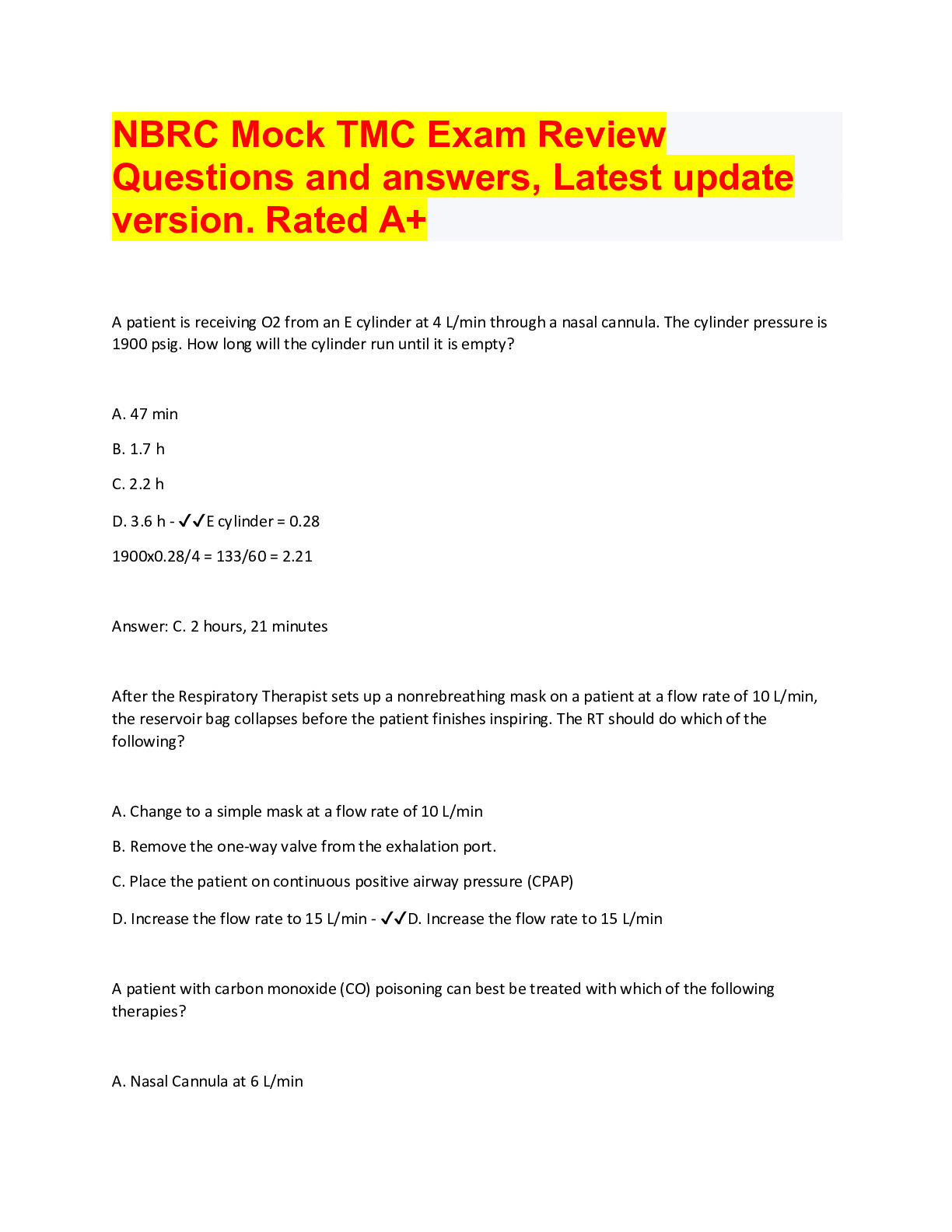
TMC EXAM BUNDLE, QUESTIONS WITH ACCURATE ANSWERS
ALL VERSIONS OF TMC EXAM PAPERS, BUNDLED QUESTIONS WITH ANSWERS, LATEST UPDATES
By bundleHub Solution guider 1 year ago
$38
16
Reviews( 0 )
Document information
Connected school, study & course
About the document
Uploaded On
Aug 07, 2022
Number of pages
31
Written in
Additional information
This document has been written for:
Uploaded
Aug 07, 2022
Downloads
0
Views
94

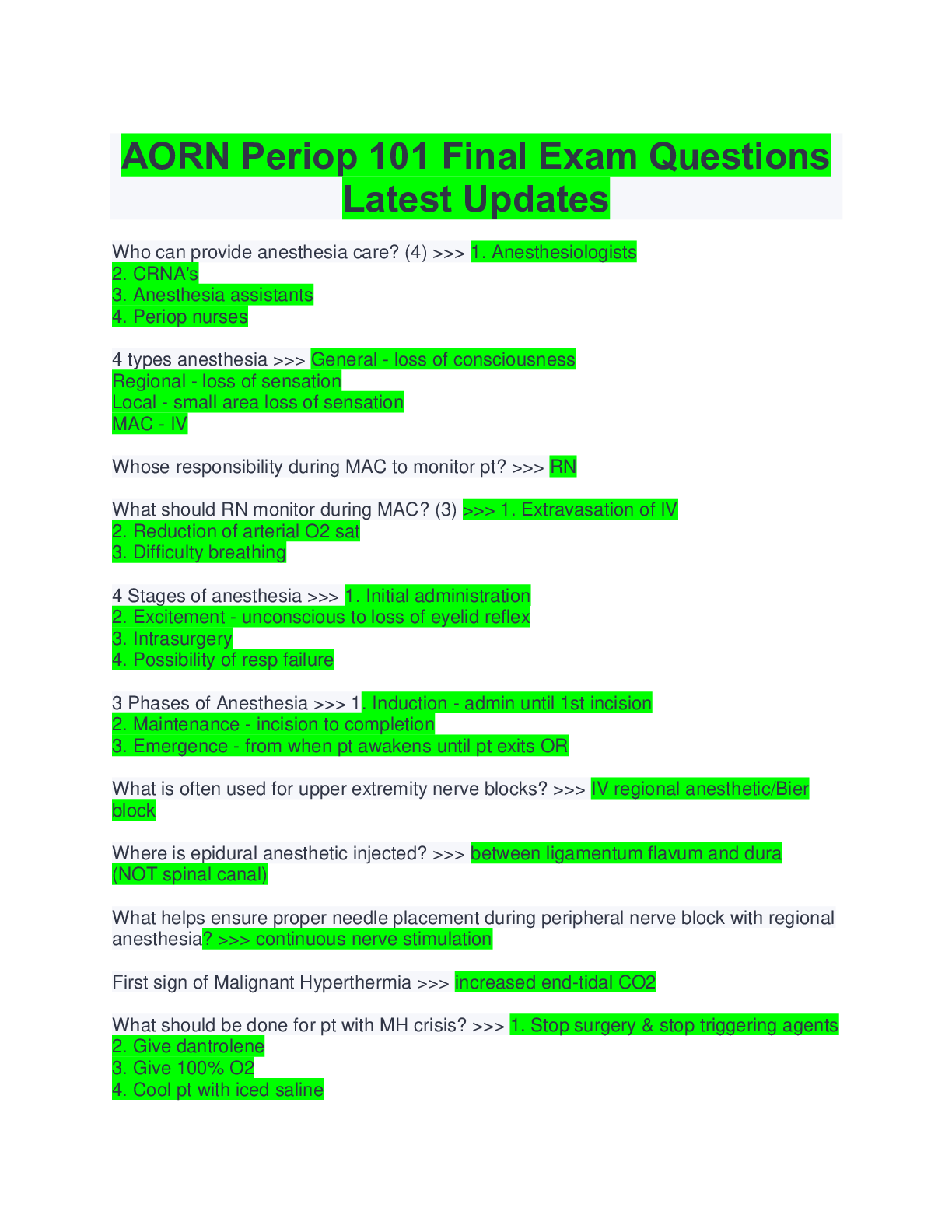






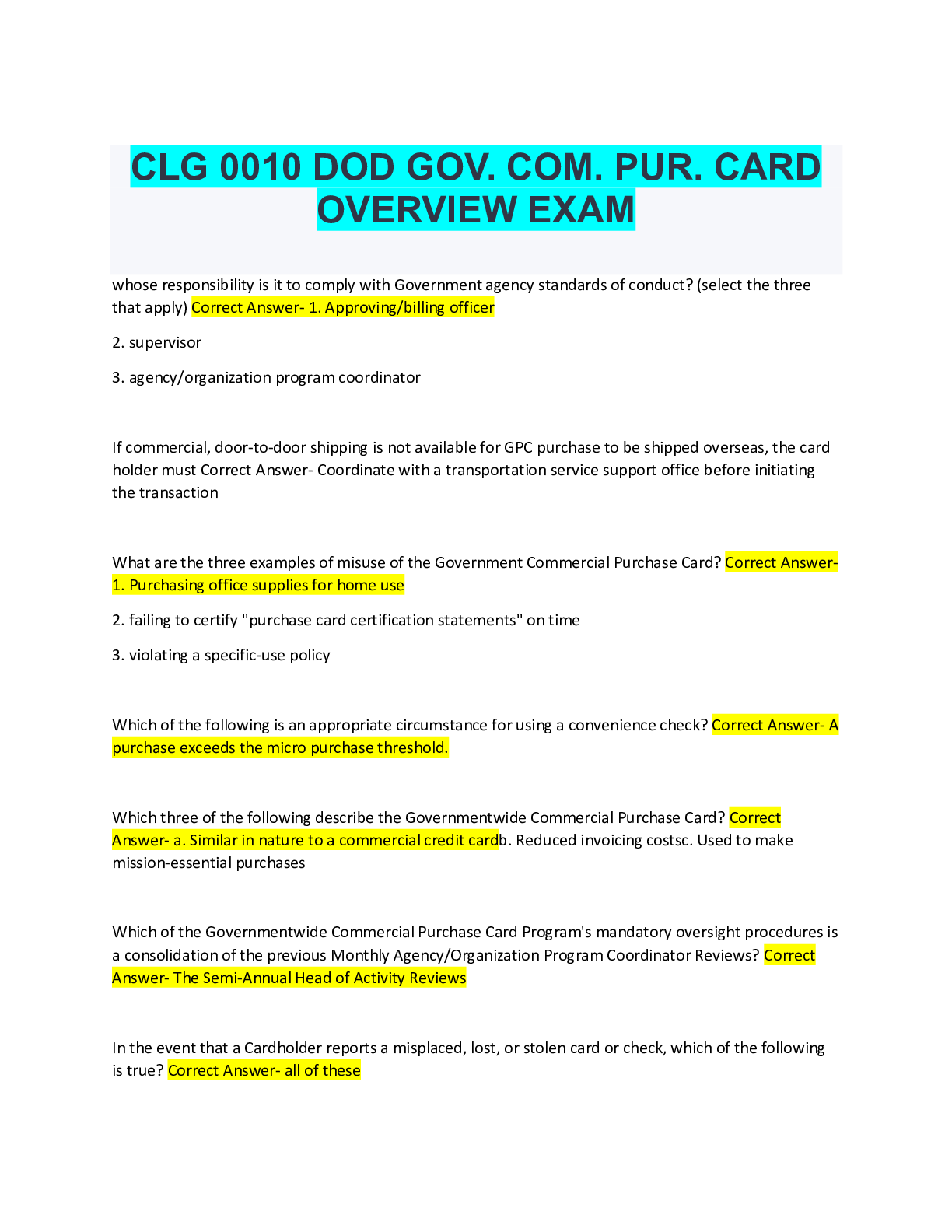


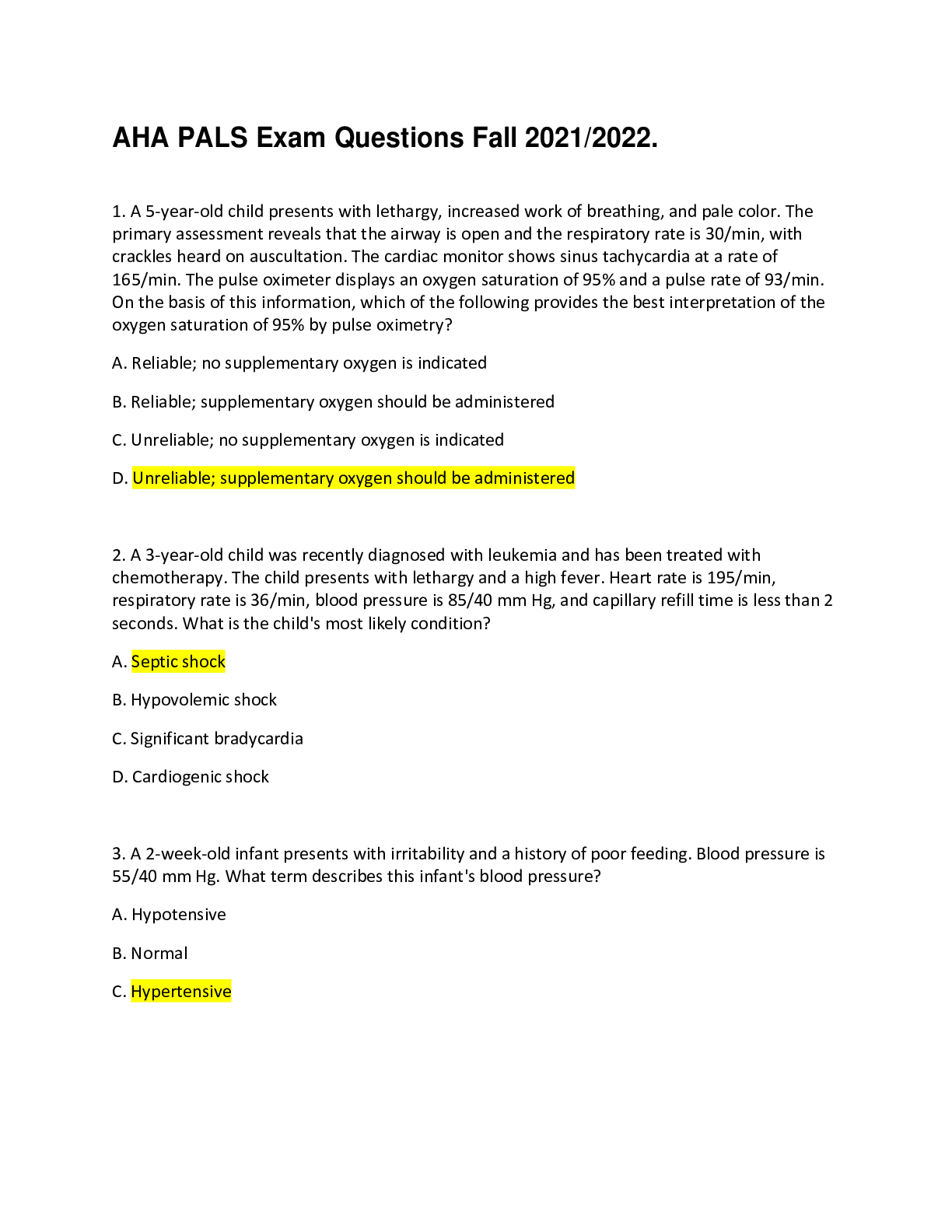

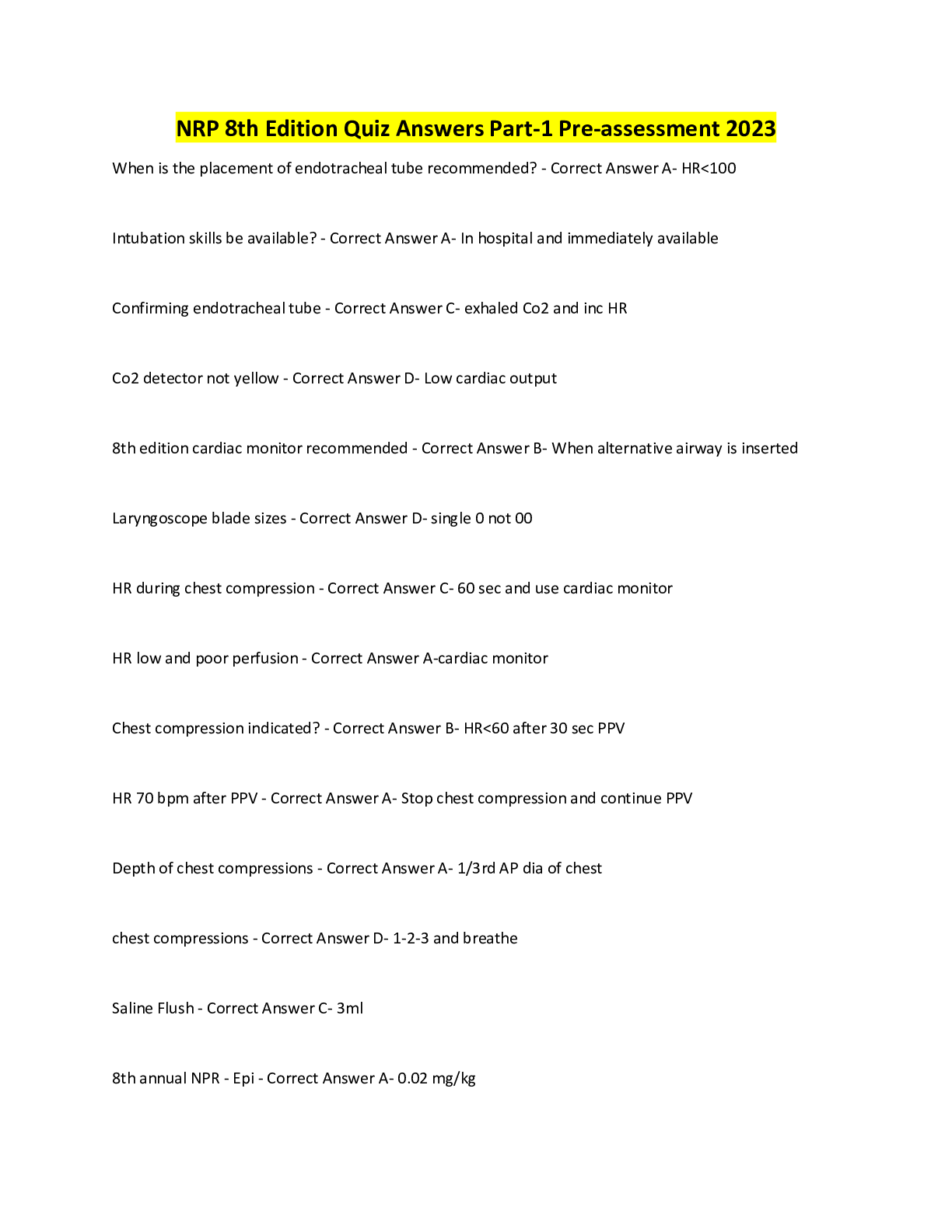

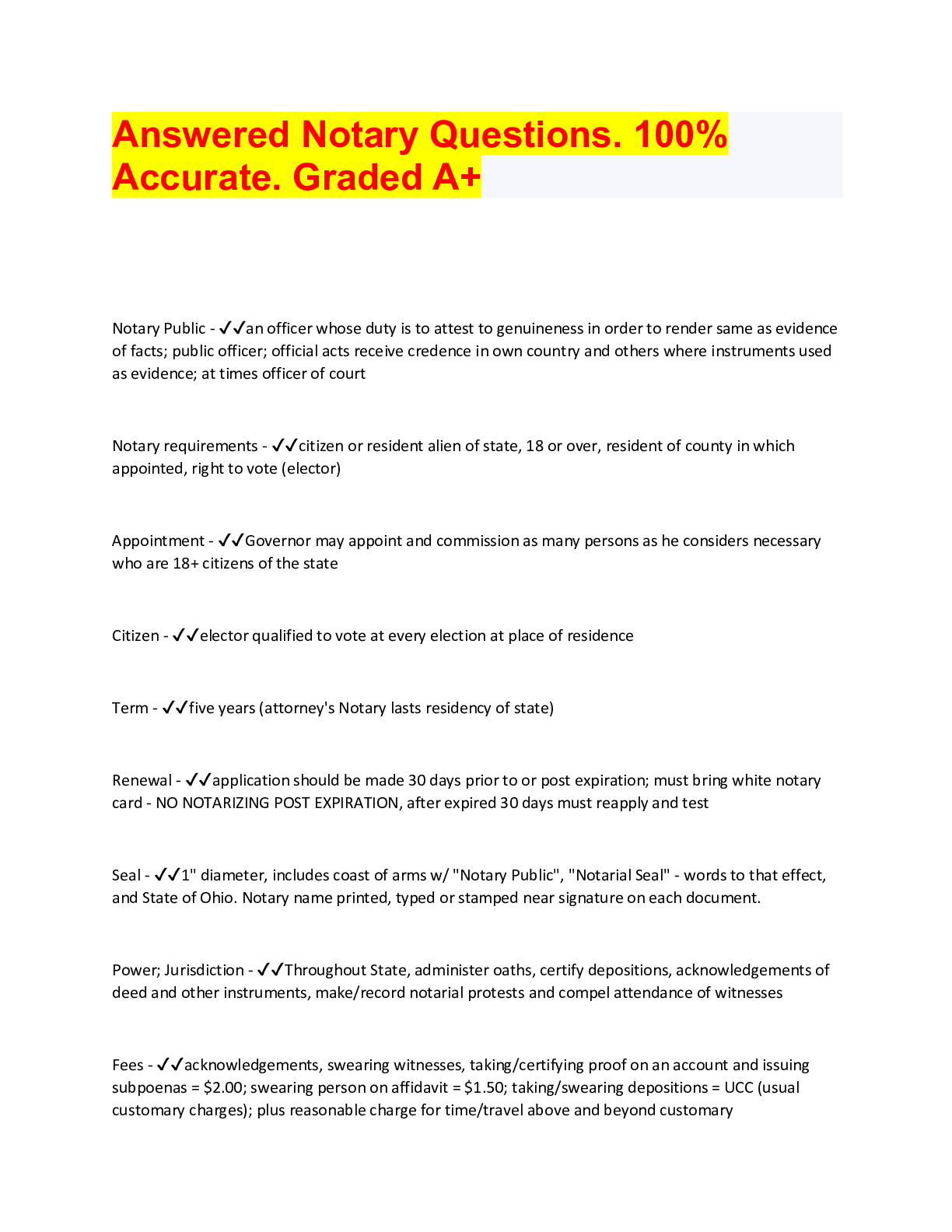

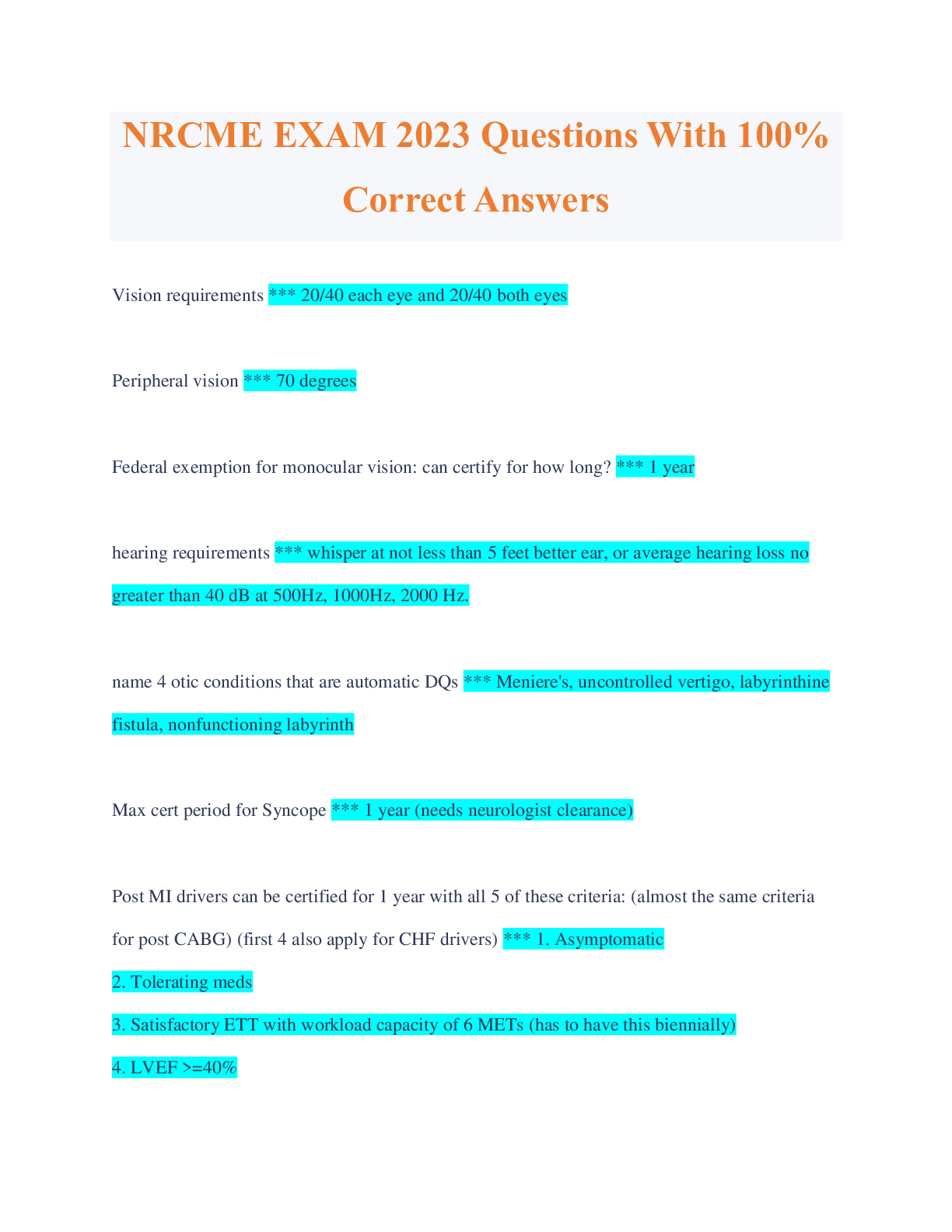

.png)
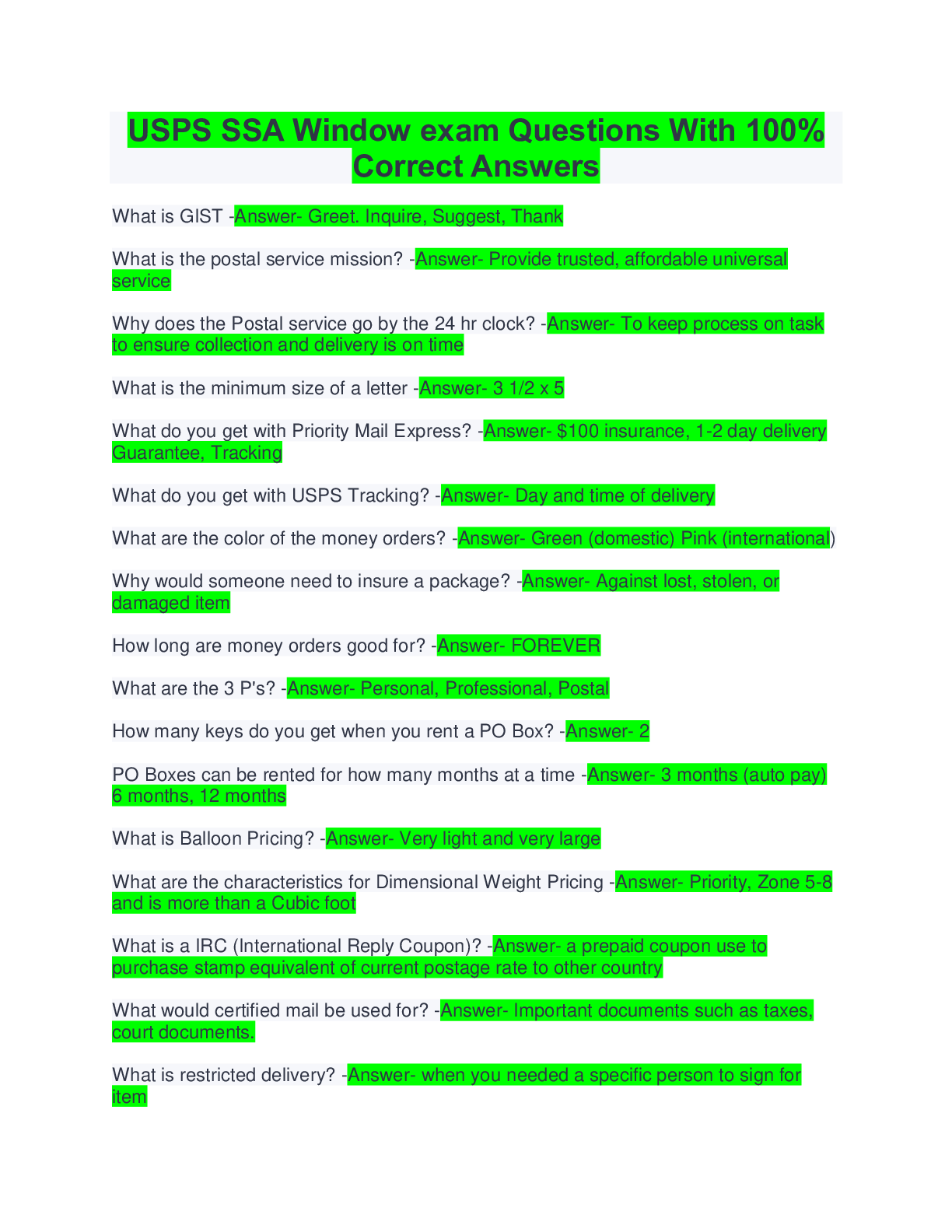
.png)
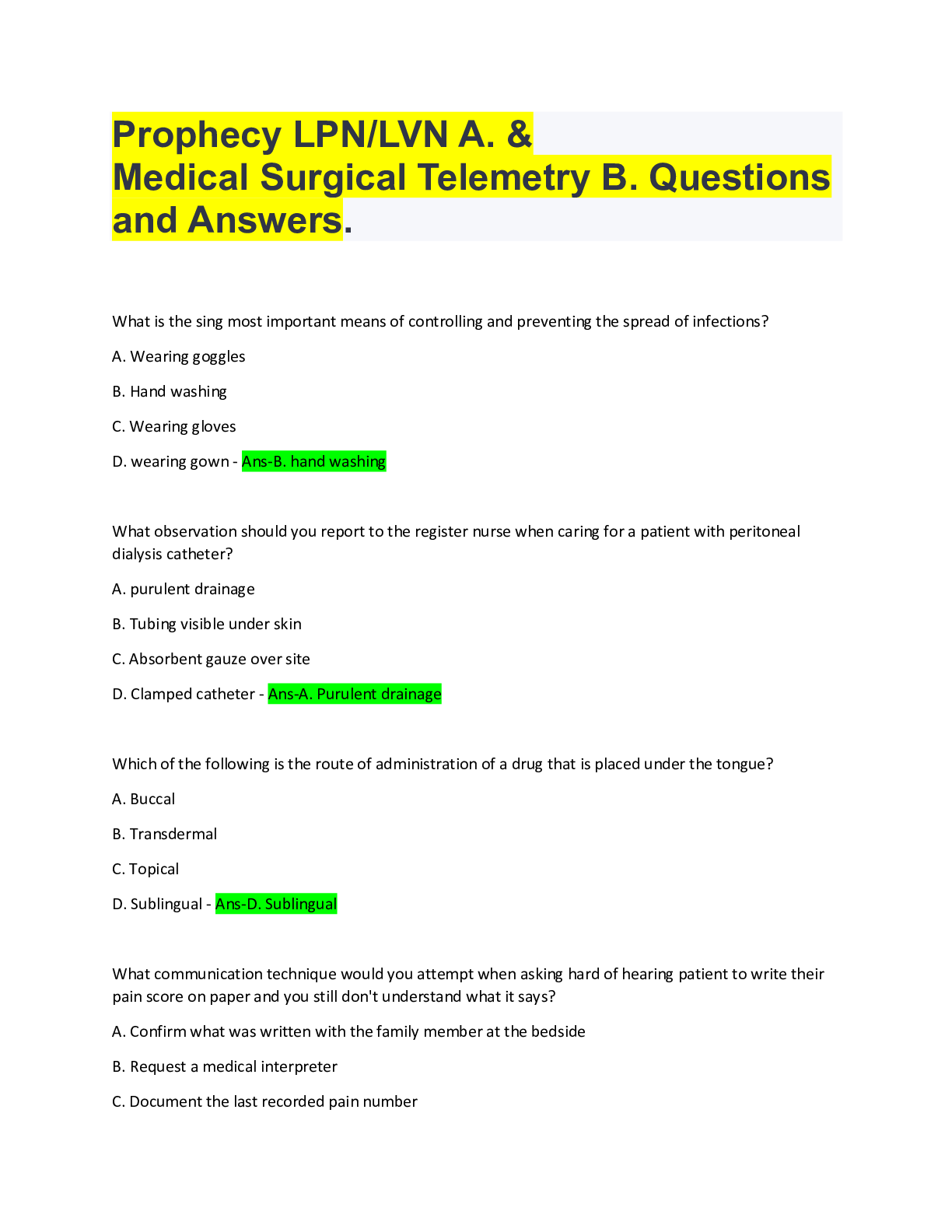
.png)
